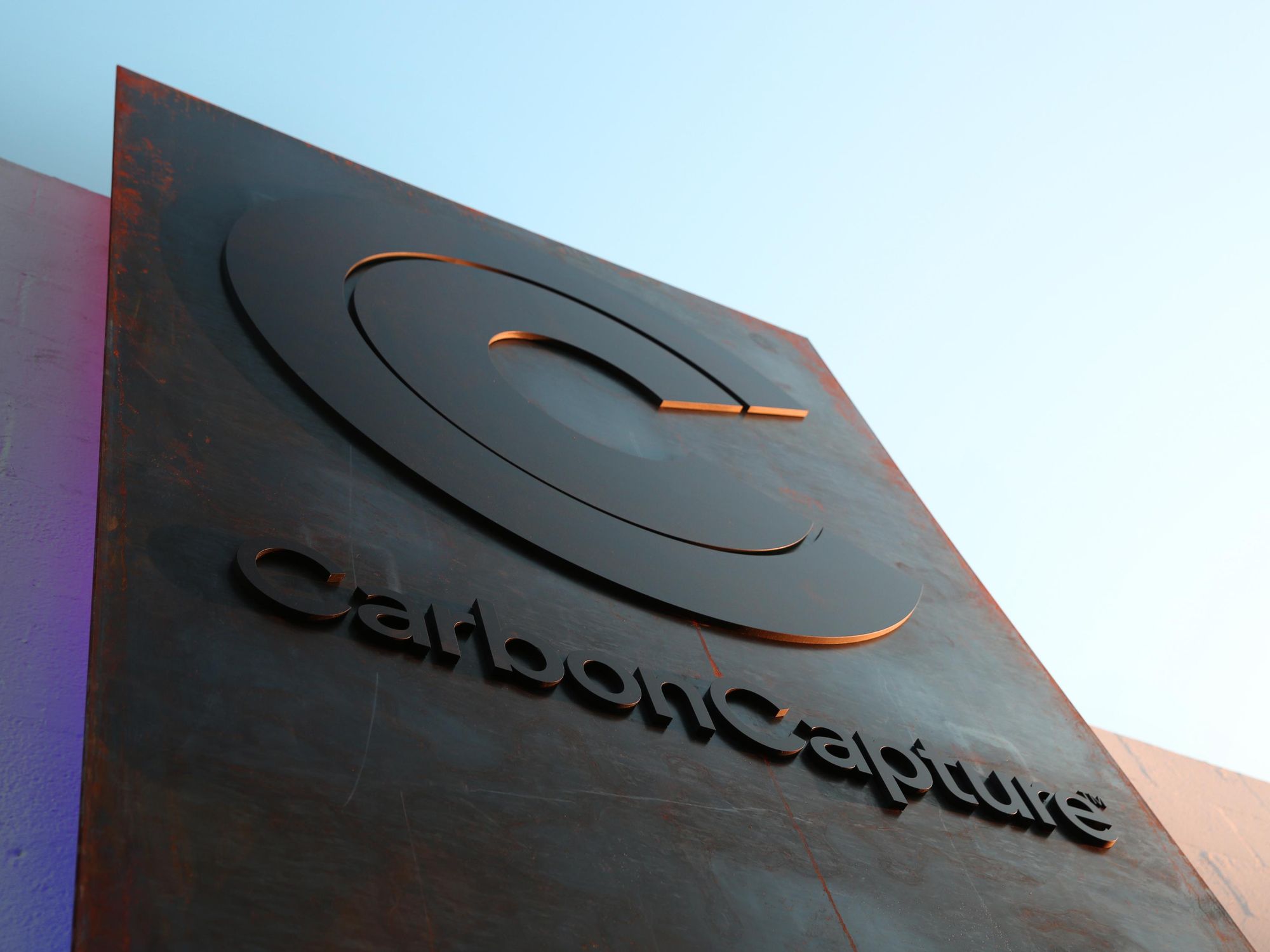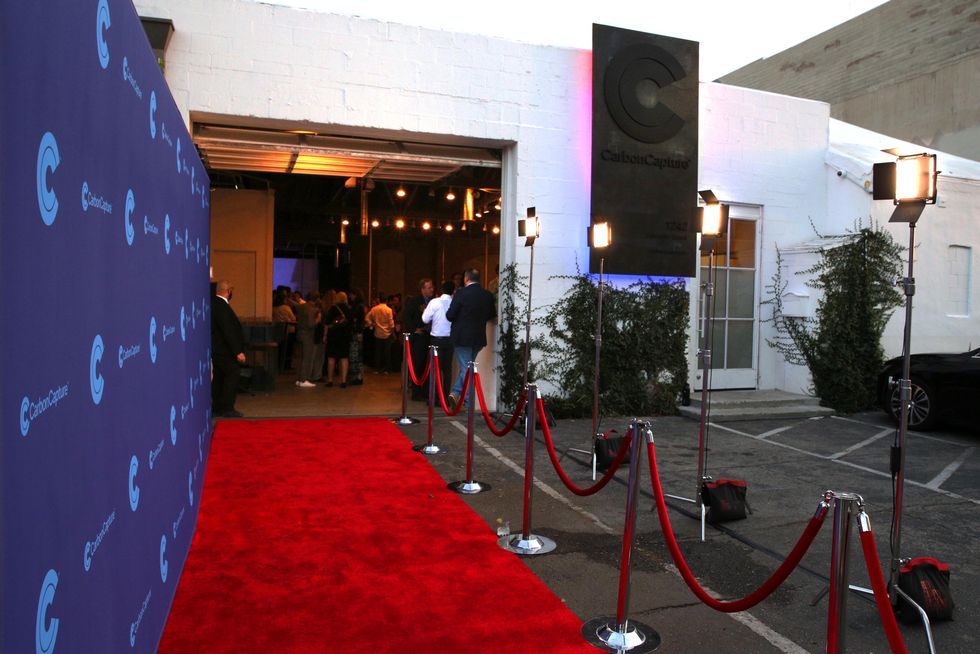CarbonCapture Opens New Headquarters in Downtown Los Angeles
Samson Amore is a reporter for dot.LA. He holds a degree in journalism from Emerson College. Send tips or pitches to samsonamore@dot.la and find him on Twitter @Samsonamore.

CarbonCapture’s past week has been chock full of excitement.
The startup opened the doors of new headquarters in Los Angeles’ swank downtown Arts District Tuesday, welcoming fascinated guests in to explore the new digs and see demonstrations of its carbon-removal reactor in action.
CarbonCapture’s goal is to develop technology that removes carbon dioxide from the atmosphere with direct air capture machines networked with each other around the globe. It took one leap forward in its mission this week when it opened a carbon capture and storage facility in Wyoming. The company is partnering with Texas climate startup Frontier Carbon Solutions which will supply the storage infrastructure for CarbonCapture’s technology.
The partnership is nicknamed “Project Bison” (presumably, because wild bison are cool and also, the few that remain are quite literally shrinking as the climate warms).
The plant will draw carbon dioxide from the atmosphere and store it securely underground. Currently, it’s the largest facility of its kind in the country, and CarbonCapture estimates that by 2030 it could remove 5 million tons of carbon from the atmosphere every year.

CarbonCapture CEO Adrian Corless said the drive for the facility was partly spurred by the recently passed Inflation Reduction Act, in which President Joe Biden’s administration earmarked $370 billion for investment in green energy and climate change mitigation.
“Our goal is to leverage economies of scale to offer the lowest priced [direct air capture]-based carbon removal credits in the market,” Corless said in a statement.
The Inflation Reduction Act further incentivized businesses to buy carbon removal credits – a practice opponents claim basically amounts to climate “indulgences.”
Other critics, including International Environmental Law CEO Carroll Muffett, aren’t sure carbon capture is as effective as its proponents claim. In a recent Investopedia interview, Muffett called the technology as a whole “a cure insearch of a disease,” and noted that “[carbon capture and storage] takes a technology that is just increasingly uncompetitive and not economic, and it makes it even more expensive.” Instead of offsetting carbon already emitted, Muffett recommended phasing out coal and natural gas plants altogether.
Corless noted, “with the passage of the Inflation Reduction Act, the proliferation of companies seeking high-quality carbon removal credits, and a disruptive low-cost technology, we now have the ingredients needed to scale [direct air capture] to megaton levels by the end of this decade.”

CarbonCapture plans to have its first direct air capture modules up and running by the end of next year, Corless said, noting the company will keep installing more as soon as they’re off the production lines.
The choice to base this project in Wyoming was incentivized by that state’s swaths of renewable energy resources as well as local tax breaks – chief strategy officer of the state’s business council Sarah Fitz-Gerald told Wyoming Public Media, “we have great geological carbon dioxide storage [and] we have policy that makes it really attractive to locate something like this in Wyoming.”
Removing carbon dioxide from the atmosphere is understood by the energy community at large to be a vital part of slowing down climate change. The United States is aiming to become carbon-neutral by the year 2050 – President Biden recently said he wants U.S. greenhouse gas emissions to be cut at least in half within the next seven years—no small feat.
Carbon capture facilities could be a crucial step towards realizing these ambitious energy goals. Yet the price these companies place on captured carbon could be steep in the long run. Companies will end up paying for the CO2 they use, basically a carbon tax – and areas that enact these taxes will likely end up passing the cost down to the average homeowner, as the price of energy could spike.
CarbonCapture already has companies lined up to purchase carbon removal credits, and it's supported by TIME’s climate website CO2.com and carbon credit purchasing site Cloverly.
At the time of CarbonCapture’s $35 million funding round, Corless told dot.LA, “what really scares me is the current projections that we're actually going to continue to increase emissions through 2035. We're really in a scary point in the Earth's history right now, so there's consensus that we need to shift the narrative, we need to reduce emissions.”
- LA Now Gets 60% of Its Energy From Carbon-Free Sources - dot.LA ›
- CarbonCapture Raises $35 Million to Tackle Climate Change - dot.LA ›
- Energy Shares Wants to Democratize Green Energy Investments - dot.LA ›
- Captura Plants to Use Oil Barges As a Carbon Removal System - dot.LA ›
Samson Amore is a reporter for dot.LA. He holds a degree in journalism from Emerson College. Send tips or pitches to samsonamore@dot.la and find him on Twitter @Samsonamore.



 Image Source: JetZero
Image Source: JetZero
